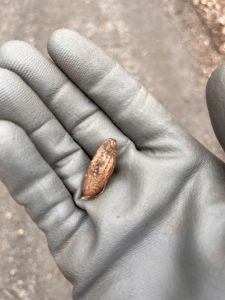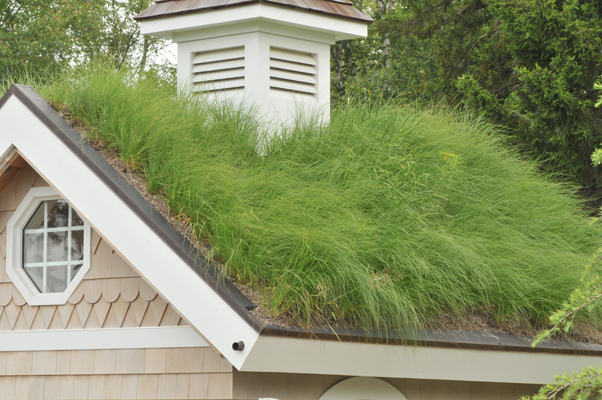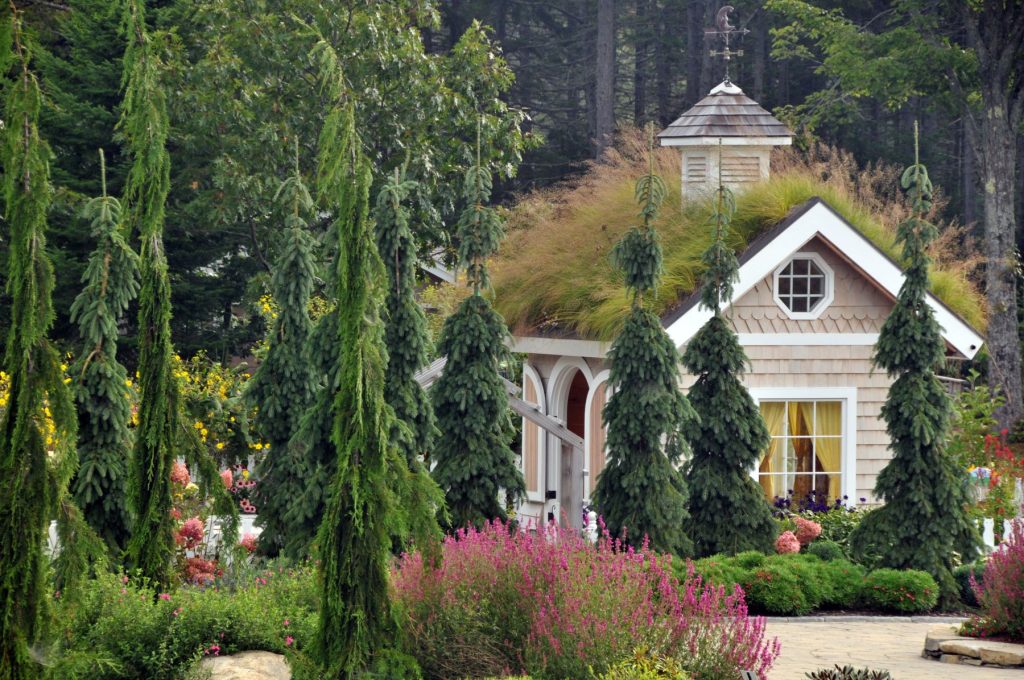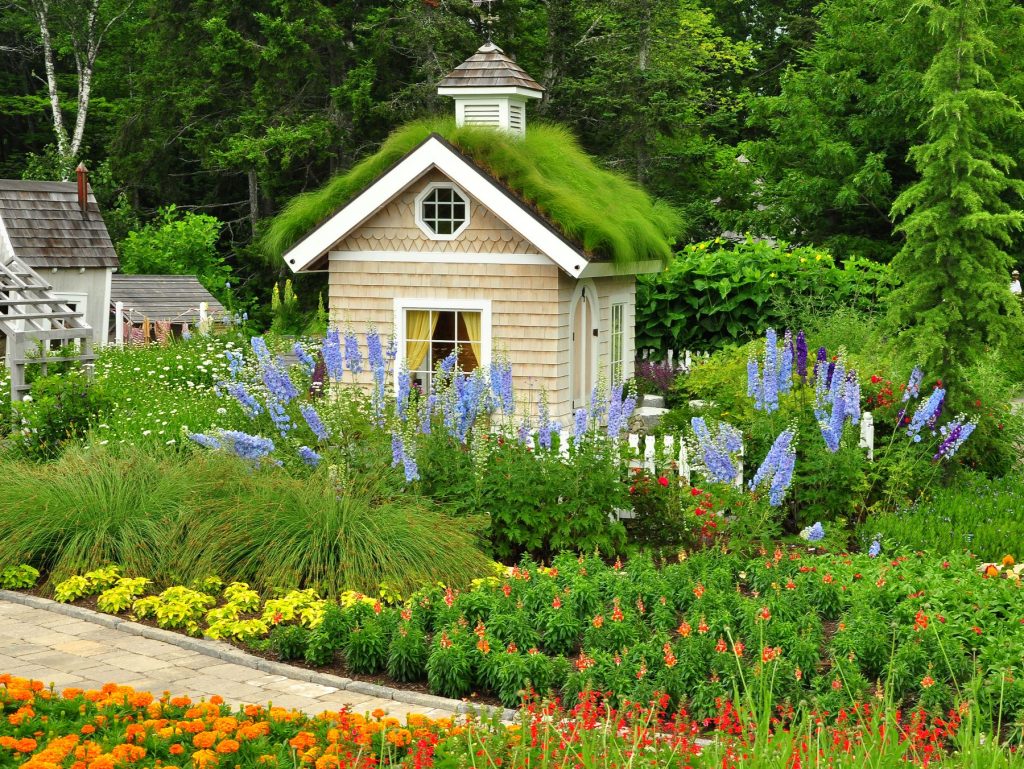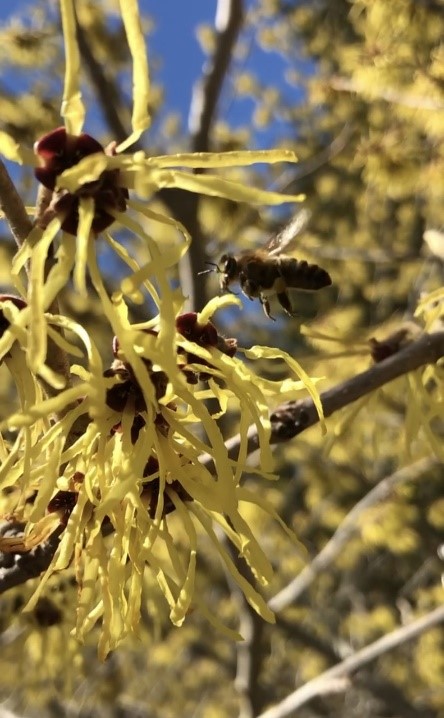Small-Scale Green Roof Design, Maintenance, and Cool Discoveries
Green roofs keep buildings cool during the summer months and provide insulation during the winter; this is great news for the planet and good news for your pocketbook too. They also help to reduce run-off during rain events, helping to reduce localized flooding. And well-designed green roof plans aren’t just nice to look at—many are interactive, offering opportunities to connect humans to the natural world, access to which, especially in urban environments, may be difficult or impossible to achieve.
Maintenance will vary depending upon the type of plant material used, but it’s typically minimal. At Coastal Maine Botanical Gardens, we enlist the help of a hardy mix of sedums on one of our small green roofs. These plants are very low maintenance and drought-tolerant once established. And not only do they have deliciously bright flowers that pollinators love, they put on a stunning display of orange, yellow, and burgundy hues come fall. And since they are evergreen, they offer year-round interest in the garden. Maintenance for this type of plant material merely consists of occasional weeding and trimming back the flowers after they’ve bloomed to keep the roof looking neat and tidy. Of course, there remains the option of leaving it completely natural by not deadheading, thus providing dried stems for birds to collect for nesting material as well as providing an abundance of insect habitat. This threshold is yours to decide.
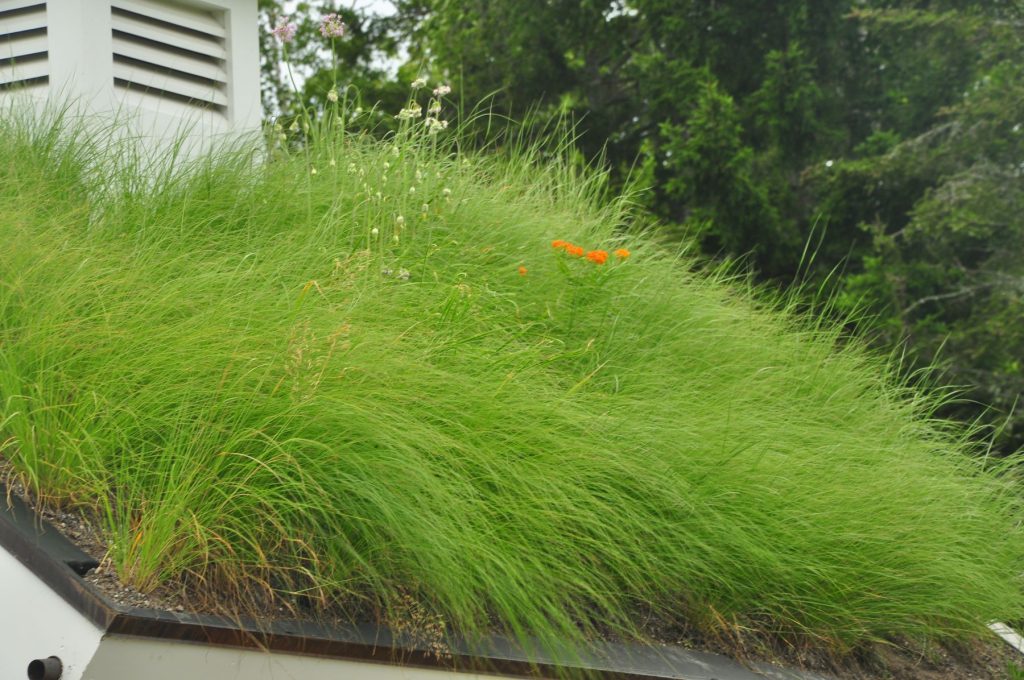
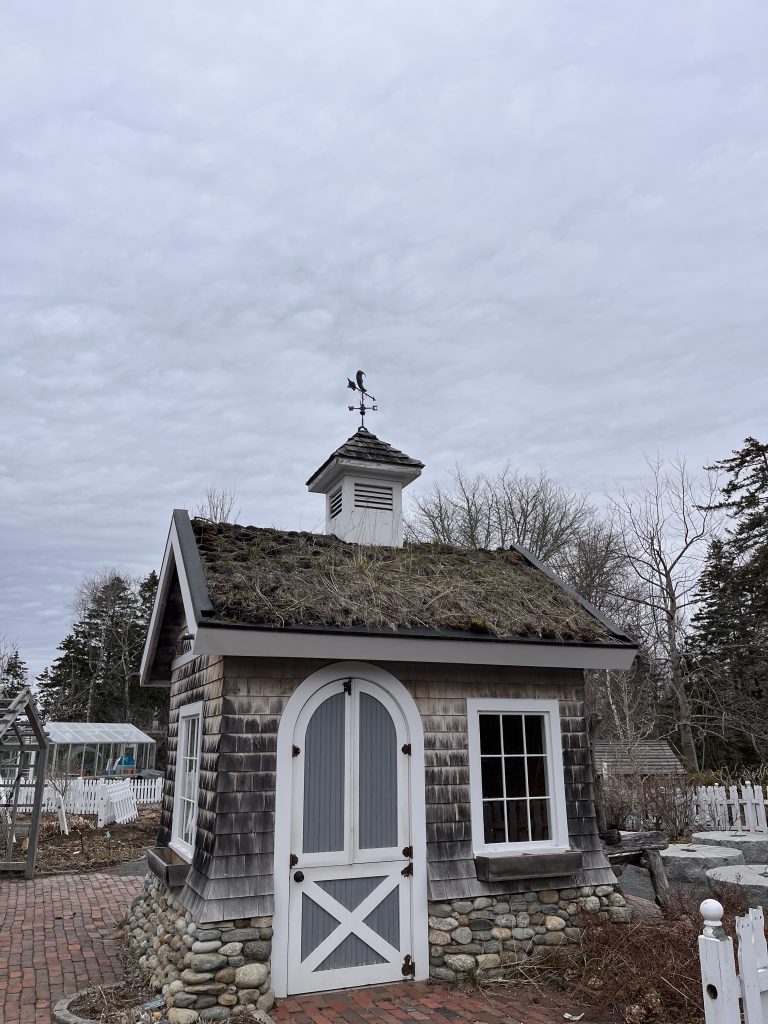
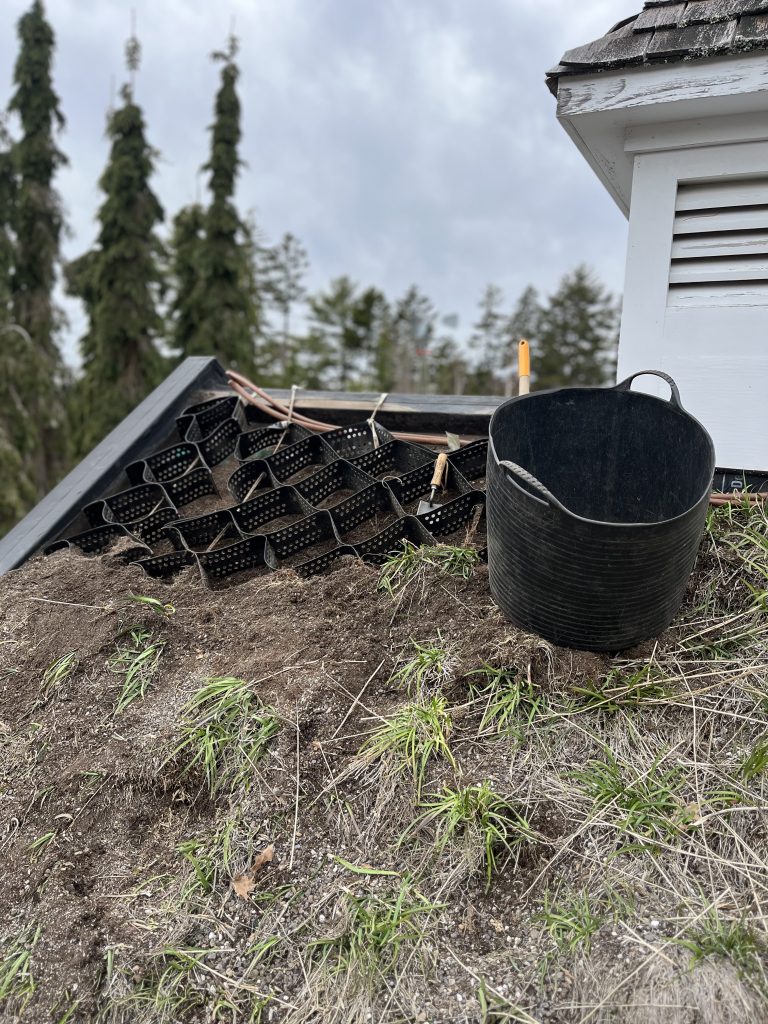
Another plant selection you’ll find on one of the Gardens’ green roofs is the native grass prairie dropseed, Sporobolus heterolepsis. This is an excellent grass selection, and also drought-tolerant once established. It that has an elegant, soft, flowing texture and provides useful habitat for ground nesting birds like dark-eyed juncos. We have repeatedly found their nests on the roof during spring cutbacks as they attempt to distract you away from their eggs with a rapid-fire succession of chirps. To keep this roof looking great, we cut the grass back in early spring, avoiding the nested areas until the chicks have flown the coop and top-dress with a light layer of compost for added nutrient value.
All of the green roofs at Coastal Maine Botanical Gardens have irrigation in place to assist during times of drought and, while not necessary, if it’s in your budget it’s certainly helpful to consider adding this element.
However you decide to design it, urban green roof spaces create pockets of peace for people. And by incorporating locally native plants in the design, you are assisting in supporting ecosystems by providing food and shelter to a myriad of creatures large and small. You don’t have to live in a city to reap the benefits of a green roof, nor do you need to own a skyscraper or other tall building. Consider turning something as small as a dog house, a potting shed, or a small cottage into a green roof oasis and your eyes, your heart, and your wallet will thank you.
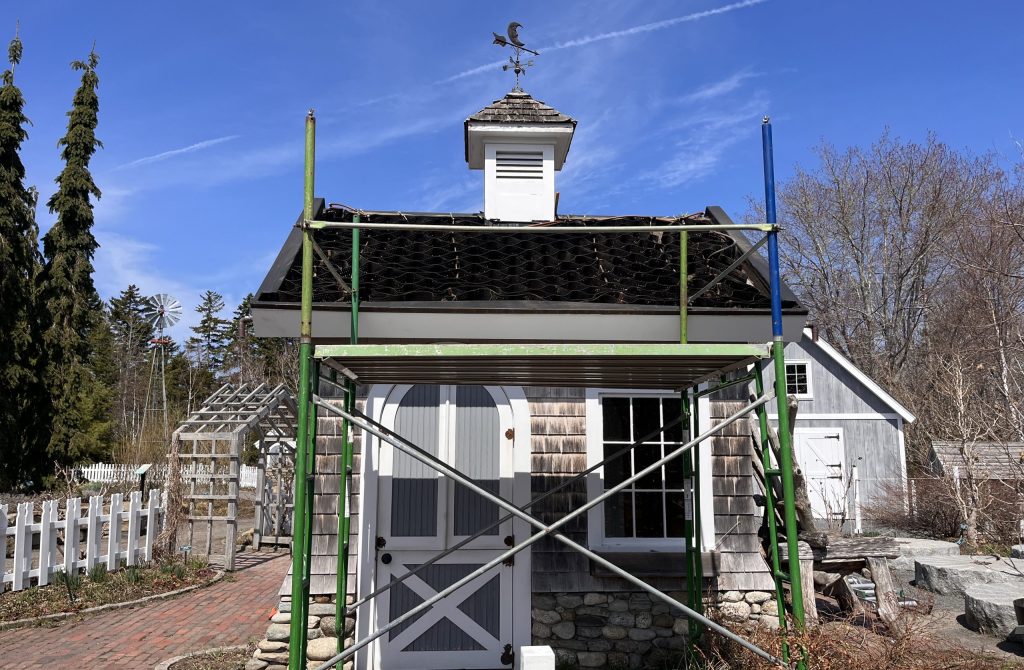
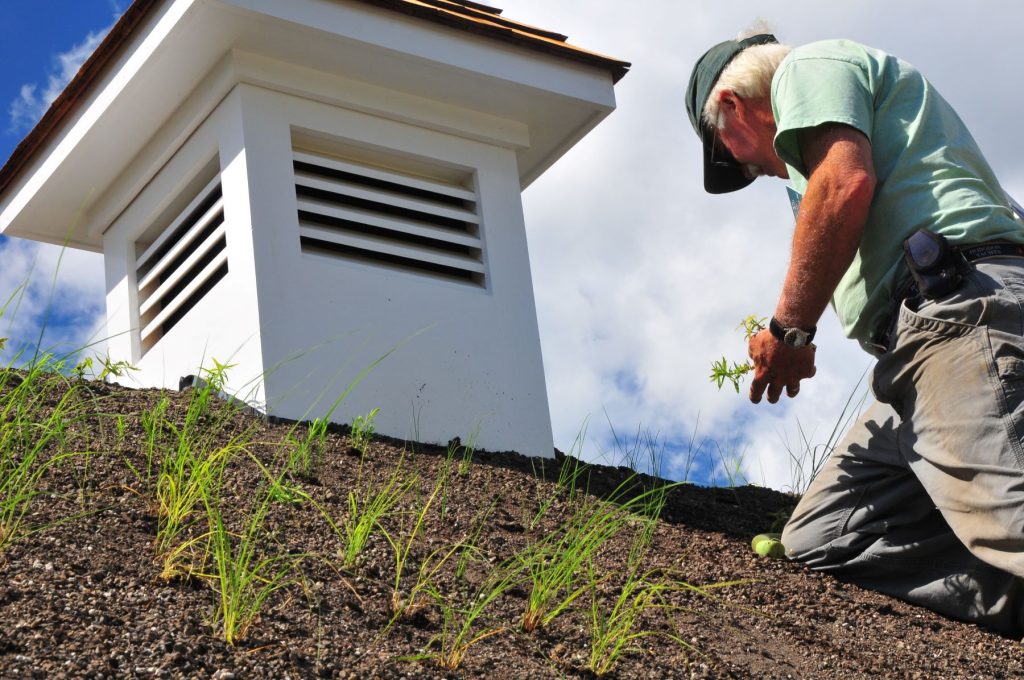
Cool Discoveries
Aside from dark-eyed juncos and their beautifully speckled eggs, on our green roofs we’ve found half-eaten jelly sandwiches, toys, and other odds and ends that children like to challenge themselves with relocating atop the roof. You never know what you’re going to find. This year, we’re replacing the soil and plant material on one of the cottage roofs and, while cleaning the roof off, we found lots of small, brown, fuzzy cocoons, roughly two inches beneath the soil surface. We’re thinking they belong to a prominent or noctuid moth. These were only on the south-facing side where it was very dry with little to no root mass in the soil. On the north side, where there was a higher moisture content and far more root mass to contend with, no cocoons were present.
An interesting discovery for sure! Moths are underappreciated insects, often with negative associations due to a few bad apples that ruin it for the rest. (I’m looking at you, brown-tail, spongey, and winter moths, to name a well-known few.) The inconspicuous brown moths we found tend to get a bad rap all on their own due to their unfortunate habit of defoliating tree canopies. And while this defoliation isn’t to the extent that they kill the trees, they can become unsightly and, if defoliated repeatedly year after year, it will eventually lead to a decline in the health of the tree. Bats are the main predator of moths and it’s no wonder, that with bat populations in decline, we are losing the natural balance and noticing more damage from moths.
